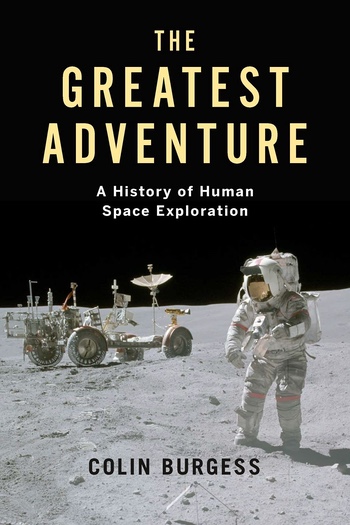Review: The Greatest Adventureby Jeff Foust
|
| The end of the Apollo-Soyuz mission is on page 250 of the book. Everything else in human spaceflight since is crammed in its last 90 pages. |
For much of the book, Burgess is recapping each mission by the Americans and Soviets, examining what took place from launch to landing. The focus is on those missions and the astronauts and cosmonauts who flew them, and only secondarily on policy and technology issues. It’s a very straightforward account of the advances and setbacks from those missions.
The problem is that he sets a pace that he cannot sustain in the rest of the book, like a marathoner running too quickly in the first few miles of the race. His discussion of the Apollo-Soyuz Test Project wraps up on page 250 of the book. All the events that followed—the shuttle, Mir, International Space Station, Chinese and commercial human spaceflight—is condensed into the last 90 pages. A chapter titled “Space Shuttles and the ISS” doesn’t even discuss the ISS in any detail; that’s reserved for a portion, but only a portion, of a later chapter. The entire history of China’s human spaceflight program is contained in just four pages, including several photos and a table.
There’s also a sloppiness in those final chapters. In discussing a 2004 bill that provided regulatory certainty for the commercial human spaceflight industry in the US, he writes that the bill “was signed into law in the United States by 269 votes to 120.” Bills, of course, are not signed into law by votes; this was the outcome of the House vote on the bill that was a critical, but not final, step in its enactment. An illustration described as a Falcon 9 launching a Crew Dragon is, in fact, an illustration of an in-fight abort of that spacecraft.
There is no grand analysis or synthesis of human spaceflight—why and how, not just who and what—in The Greatest Adventure. It is an example of a subgenre of space history that takes a nostalgic view of the past, one where the one-upmanship between the US and the USSR was that greatest adventure, culminating in the Apollo 11 landing. Everything since is something of a disappointment since it did not continue the trend of those early years. Yet, today is perhaps the most dynamic time in human spaceflight since those early days, if not ever, given the growing number of companies and countries involved, and capabilities that can make human spaceflight more sustainable while enabling a return to the Moon and eventual human missions to Mars. To ignore or gloss over those aspects does the reader a disservice. Even historians cannot live in the past.
Note: we are using a new commenting system, which may require you to create a new account.
